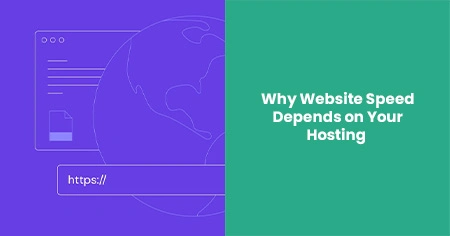If you're scratching your head wondering how web hosting fits into this, you're not alone. Most folks think design, images, or code bloat are the villains. They are — but without a solid hosting foundation, none of your optimization tricks will stick.
The Basics: What Hosting Actually Does
Let's get the obvious out of the way. Web hosting is where your site lives. Every image, every bit of code, every page — it’s all sitting on a server somewhere. When someone clicks your link, their browser reaches out to that server and says, "Hey, send me this site." Hosting is how fast that server responds, pulls the files together, and delivers them.
Now imagine that server is overloaded, poorly configured, or located halfway across the planet. Suddenly that tiny request turns into a long, groaning process. Doesn’t matter how pretty your site is — if the hosting’s clunky, everything else suffers.
Server Response Time: The Invisible Lag
Ever heard of Time to First Byte (TTFB)? It’s a fancy term for how long the server takes to respond after a user clicks a link. If your TTFB is high, your site's already losing the race — even before the browser starts loading visuals. Bad hosting providers often have slow TTFB due to cheap infrastructure or overcrowded servers. Shared hosting, in particular, is guilty of this.
You think you’re getting a deal, but what you’re really getting is a server crammed with hundreds of other sites, all fighting for the same limited resources.
Location, Location, Location (Yes, Even Online)
Let’s say your hosting provider’s main data center is in Singapore, but most of your audience is in Canada. That distance can add milliseconds — sometimes full seconds — to load times. Doesn’t sound like much? In digital time, it’s massive.
Good hosting companies let you choose server locations. Some even integrate content delivery networks (CDNs), so your content loads from a spot closer to the user. This small shift alone can drastically improve speed.
Bandwidth and Storage Limits: Sneaky Bottlenecks
Here’s another kicker: many budget hosting plans come with limits. Limited bandwidth means fewer users can access your site at the same time without slowdowns. Limited storage might mean older, slower drives are used — and yes, that affects speed too.
Modern SSD storage and unmetered bandwidth aren't just marketing fluff. They directly impact how quickly your files can be read and served. If you’ve ever noticed your site loads fine for you but is painfully slow for others, this might be why.
The Power of Server Type: Shared, VPS, or Dedicated?
If you’re on shared hosting, congrats — you’re renting a bed in a hostel. You’ve got neighbors (a lot of them), and you all share the same bathroom and kitchen. Someone hogs the shower? Everyone suffers.
VPS (Virtual Private Server) is a step up. Think apartment living — shared building, but your own space. Dedicated hosting? You own the building. The result? Better performance, faster speeds, and fewer nasty surprises.
Some managed hosting services even optimize their stack specifically for WordPress, Magento, or other platforms. That means fine-tuned performance out of the box — less time tweaking, more time building.
Uptime Ain’t Just About Being Online
Uptime matters for speed too. Ever notice a site taking forever to load, then timing out? That’s often a server that’s wobbling — still technically online but barely able to respond. Good hosting equals consistent uptime, which means no crawling or crashing when traffic spikes.
It’s not just about being “up.” It’s about being up and running fast.
Support: The Unsung Hero of Speed
Picture this: your site’s suddenly slow, traffic’s plummeting, and you have no idea why. You contact support — and they ghost you. Or worse, they reply in 48 hours with a script that doesn’t help.
Good hosting support is proactive. The best ones monitor performance and alert you before issues even surface. And when something breaks, they jump in and fix it fast. No speed plug-in beats a real human who knows their servers.
When Hosting is the Bottleneck (and You Don’t Even Know It)
Here’s a fun one: You do everything right. Compress images, cache pages, strip the code. But your site’s still slow. You blame plugins. You tear apart your theme. You go a little mad.
Then, one day, you switch hosting providers. Boom — instant speed bump. No other changes. Just the host. Happens more often than you think.
We tend to underestimate the role of infrastructure. But like any house, it doesn’t matter how nice your furniture is if the floor’s cracked.
What to Look For in a Speed-Focused Host
Not all hosts are created equal. Some red flags to watch for:
- Vague descriptions about "unlimited everything"
- No mention of SSDs or modern hardware
- No server location options
- Little or no uptime guarantee
- Poor customer reviews about support
And green flags?
- Transparent infrastructure specs
- Data centers near your audience
- Integrated caching or CDN
- Scalable resources (RAM, CPU)
- Real, human support — 24/7
When to Upgrade (and When Not To)
Sometimes, speed issues aren’t about the host — they’re about your expectations. If your traffic jumps, your needs shift too. That $2/month plan might’ve worked last year. Today? You need more muscle.
That said, don’t throw money at the problem without diagnosing it. Tools like GTmetrix, PageSpeed Insights, or WebPageTest can show you if hosting’s the problem — or if it’s your bloated slider plugin.
The Hosting-Speed Equation
We like to obsess over design and features. And sure, they matter. But behind the scenes, hosting is the engine. You can polish the paint all day, but if the engine’s weak, the car crawls.








